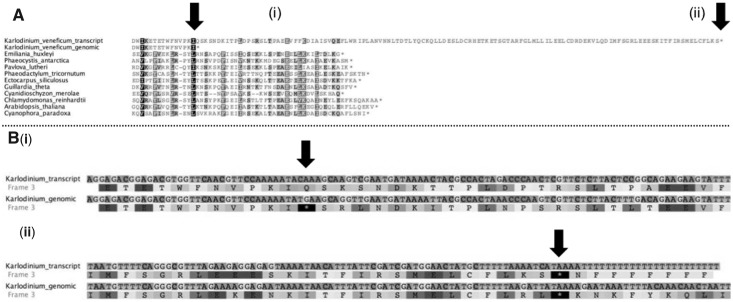Fig. 5.
Generation of a novel C-terminal sequence extension by editing of Karlodinium veneficum atpA transcripts. (A) An alignment of the predicted translation products of the genomic and transcript sequences of Karl. veneficum atpA with protein sequences from other plastid lineages. (B) A nucleotide sequence alignment, and predicted translation products of two regions of the Karl. veneficum genomic and transcript sequence in detail. Residues important for defining the size of the predicted translation product of each Karl. veneficum sequence are labeled with vertical arrows. The Karl. veneficum genomic translation product terminates approximately 33-aa upstream of the consensus AtpA C-terminus, due to the presence of an in-frame TGA STOP codon within the atpA gene sequence. This is altered by editing to a CAA-Gln codon (B[i]) in the transcript sequence, enabling the translation of the complete AtpA C-terminus. However, the atpA transcript sequence is highly divergent at the 3′-end, and does not possess a termination codon at the consensus position relative to orthologous AtpA sequences. Instead, it encodes an 85-aa extension sequence that is not conserved with other AtpA sequences, which terminates in an unedited TAA STOP codon (B[ii]).

